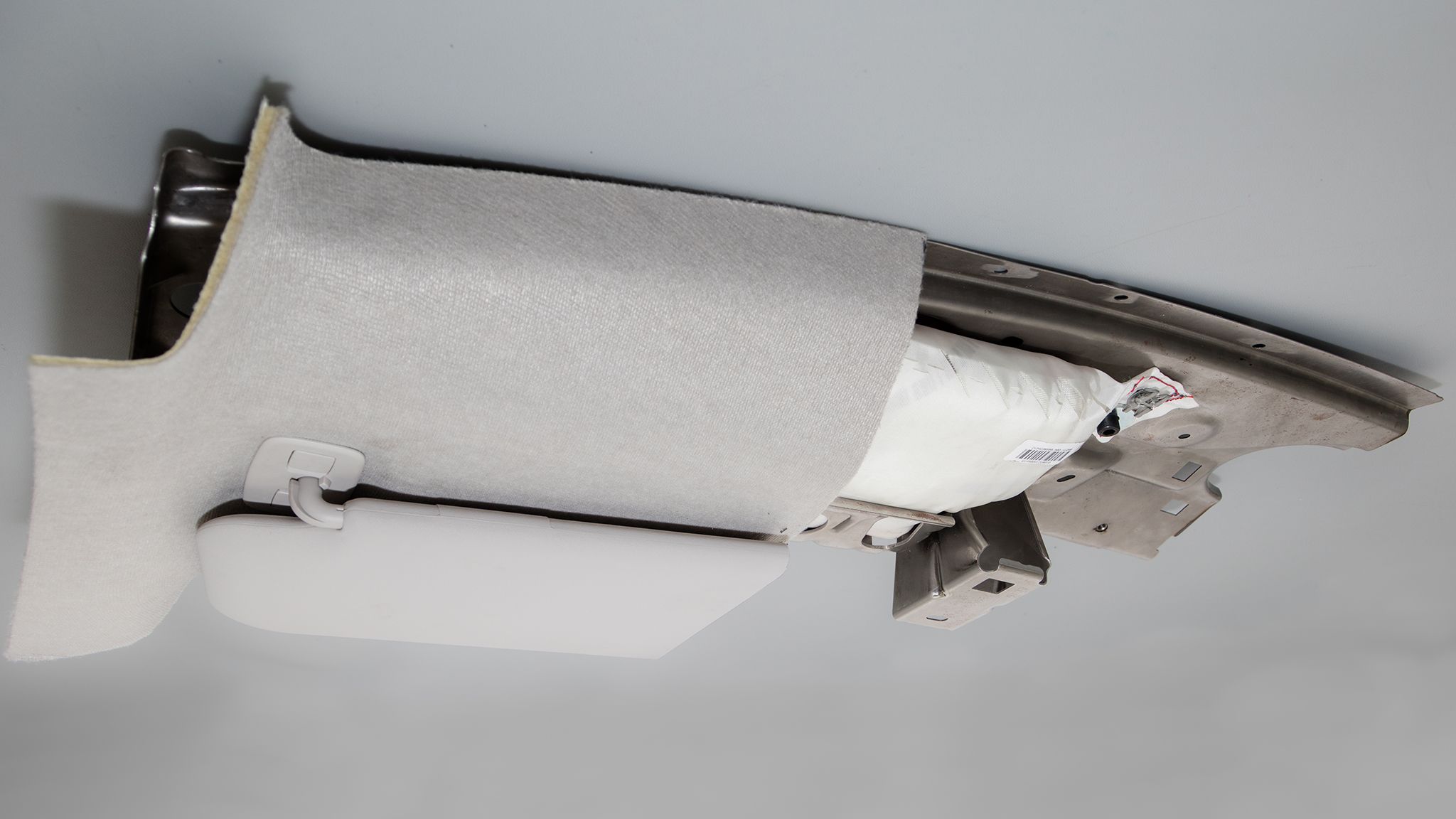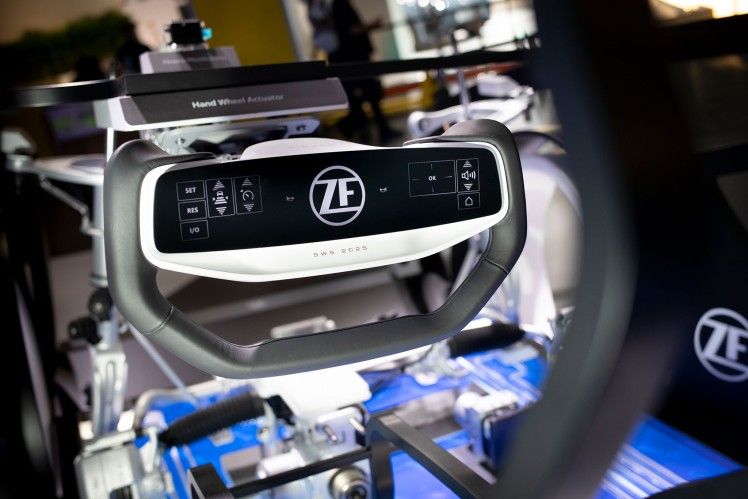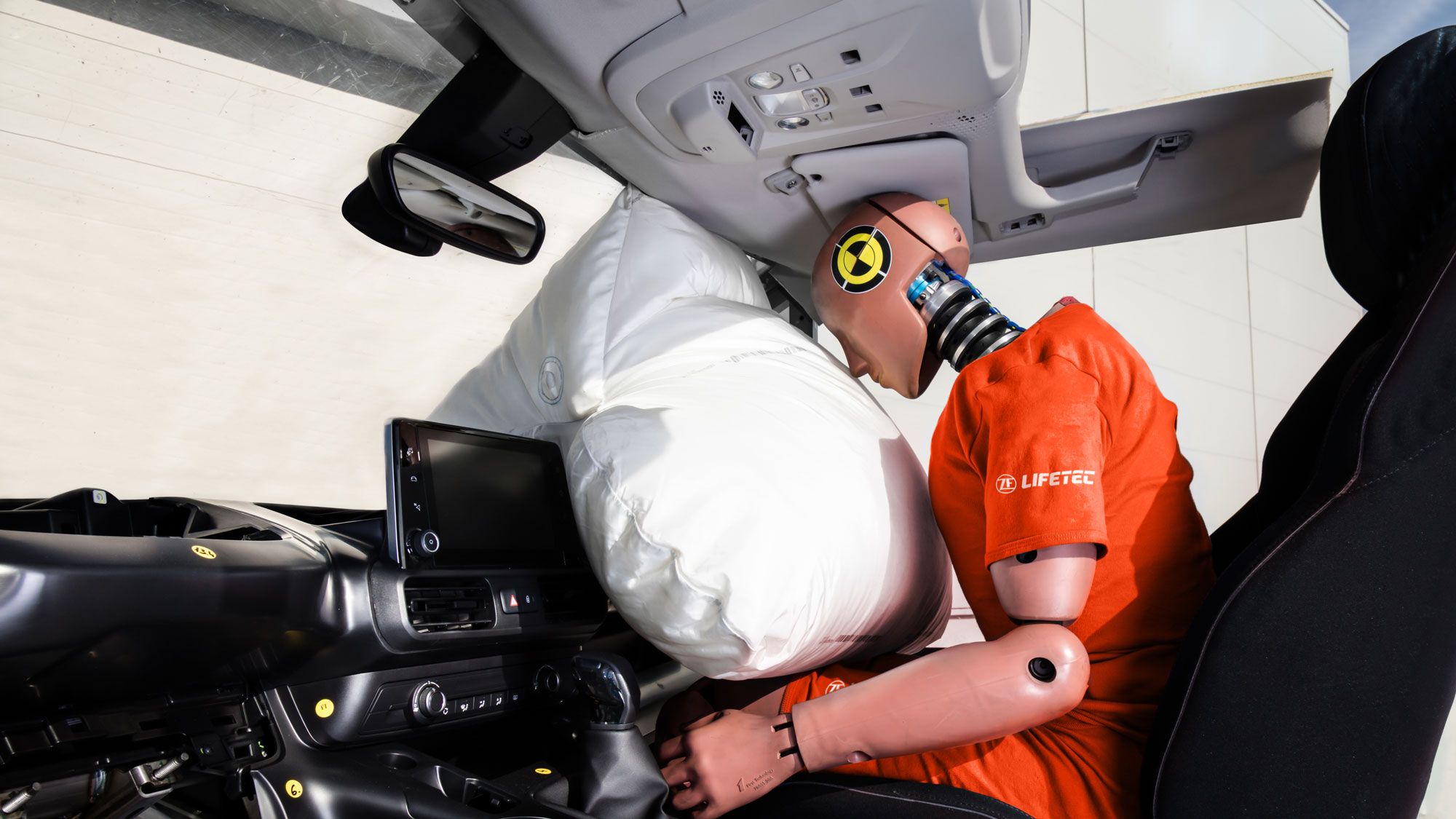ZF is regarded as a pioneer of the Bag-in-Roof airbag, which helps to protect front-seat passengers of widely differing sizes in various seating positions. The roof-mounted airbag can be a valid alternative to traditional dashboard-mounted airbags.
Front-seat passengers rejoice! The glove compartment is roomier, and passengers can watch films on the dashboard-mounted screen. What makes this extra space and design freedom possible? An airbag installed in the headliner.
The roof-mounted airbag (technically, Bag-in-Roof or BiR) celebrated its premiere back in 2014. In 2020 the application of the third BiR generation was launched. Regarded as a pioneer of this innovative, passenger-protecting restraint system, ZF is one of the few suppliers on the market. “Our roof-mounted passenger airbag can be a totally valid alternative to traditional dashboard-mounted airbags. It gives designers a lot of valuable extra freedom” explains Alfonso Bustos, Group Leader in ZF Spain Airbag Engineering.
Compact protection
The airbag can help to protect drivers and passengers of widely differing sizes in various seating positions. The folded airbag is mounted above the windshield, inside the headliner. In a head-on frontal crash, it deploys from top to bottom of the windshield in front of the driver and the passenger. The airbag helps protect passengers sitting in the front seat in the event of a crash. Compared to conventionally mounted airbags, the Bag-in-Roof can provide advanced passenger protection for new seating positions with automated driving.
This animation demonstrates how the airbag deploys from top to bottom of the windshield in front of the passenger. This enhances passenger safety through the advanced restraint system.
The airbag system is providing optimized packaging at reduced weight. It is available as a single-stage airbag with a volume up to 160 liters, or as a 190-liter dual-stage version. Compared to the first-generation airbag, ZF engineers have managed to improve both packaging and weight. They have also managed to fit into the same space a single- or dual-stage gas inflator, gas diffusion channel and airbag with enhanced vehicle assembly features.
So there does need to be some space available in the headliner, which is why it is not surprising that the first production vehicle to feature the innovative airbag was an SUV with suitably generous headroom: the Citroën C4 Cactus. The Bag-in-Roof was subsequently used in other PSA Group vehicles, such as the Citroën Berlingo, Peugeot Rifter and Opel Combo.

Now that the airbag’s design is even more compact and lightweight, this innovative occupant safety system is suitable for most vehicle architectures. In addition to the wide range of vehicle types on today’s roads, roof-mounted airbags are suitable for future vehicle concepts such as robotaxis.
Space, comfort and more
Modern car users are calling out for more screens. In general, experts believe that future motorists will attach much higher value to a car’s interior, making it a key purchase criterion. “With our Bag-in-Roof, designers can make their dashboards as deep, spacious, narrow, functional – or even digital – as they like,” emphasizes Bustos.
But that’s not all. The airbag module also reduces loads and stresses on the windshield. This interaction between airbag and windshield could generate stress on the glass under certain circumstances. Whereas, the roof-mounted airbag deploys in parallel with the windshield, reducing the risk of stress to the glass.
In short, the Bag-in-Roof offers many advantages. But why should front-seat passengers be the only ones to benefit? “We currently work on developing roof-mounted airbags for front passengers, and we believe that in the future, roof-mounted airbags could also be used to protect rear-seat passengers,” explains Bustos. For rear-seat passengers, the airbag would unfold along the back of the front seats. In the future, new cockpit and steering-wheel designs could see the Bag-in-Roof helping to protect drivers as well.

Achim Neuwirth has been writing for ZF since 2011. He has specialized in writing texts about all kinds of car-related topics: from vehicles to the technology behind them, to driving and traffic.
Next Stories

ZF Strives to Bring the Steering Wheel to the Next Level
From the outside, next generation steering wheels are multifunctional, communicative and emotional. Inside, there are sensors, software and electronics. ZF strives to make this important control instrument fit for the future.

The Seat Belt That Warms And May Increase Range
A heated seat belt provides occupants with warmth in cold temperatures and may help e-vehicles get ahead. ZF’s latest innovation has an integrated technology that weaves the heating conductors into the seat belt structure.



